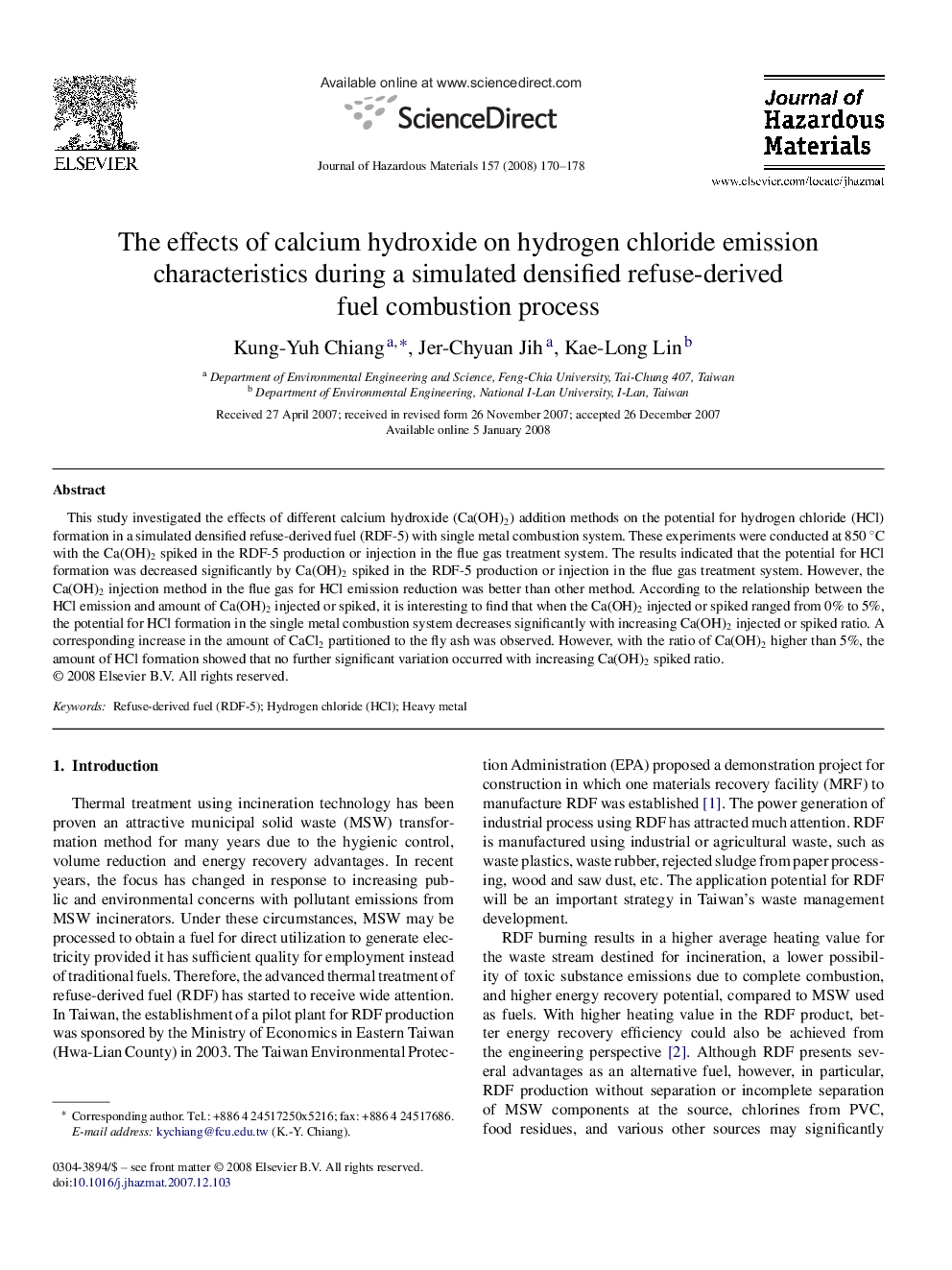| Article ID | Journal | Published Year | Pages | File Type |
|---|---|---|---|---|
| 582946 | Journal of Hazardous Materials | 2008 | 9 Pages |
Abstract
This study investigated the effects of different calcium hydroxide (Ca(OH)2) addition methods on the potential for hydrogen chloride (HCl) formation in a simulated densified refuse-derived fuel (RDF-5) with single metal combustion system. These experiments were conducted at 850 °C with the Ca(OH)2 spiked in the RDF-5 production or injection in the flue gas treatment system. The results indicated that the potential for HCl formation was decreased significantly by Ca(OH)2 spiked in the RDF-5 production or injection in the flue gas treatment system. However, the Ca(OH)2 injection method in the flue gas for HCl emission reduction was better than other method. According to the relationship between the HCl emission and amount of Ca(OH)2 injected or spiked, it is interesting to find that when the Ca(OH)2 injected or spiked ranged from 0% to 5%, the potential for HCl formation in the single metal combustion system decreases significantly with increasing Ca(OH)2 injected or spiked ratio. A corresponding increase in the amount of CaCl2 partitioned to the fly ash was observed. However, with the ratio of Ca(OH)2 higher than 5%, the amount of HCl formation showed that no further significant variation occurred with increasing Ca(OH)2 spiked ratio.
Keywords
Related Topics
Physical Sciences and Engineering
Chemical Engineering
Chemical Health and Safety
Authors
Kung-Yuh Chiang, Jer-Chyuan Jih, Kae-Long Lin,
